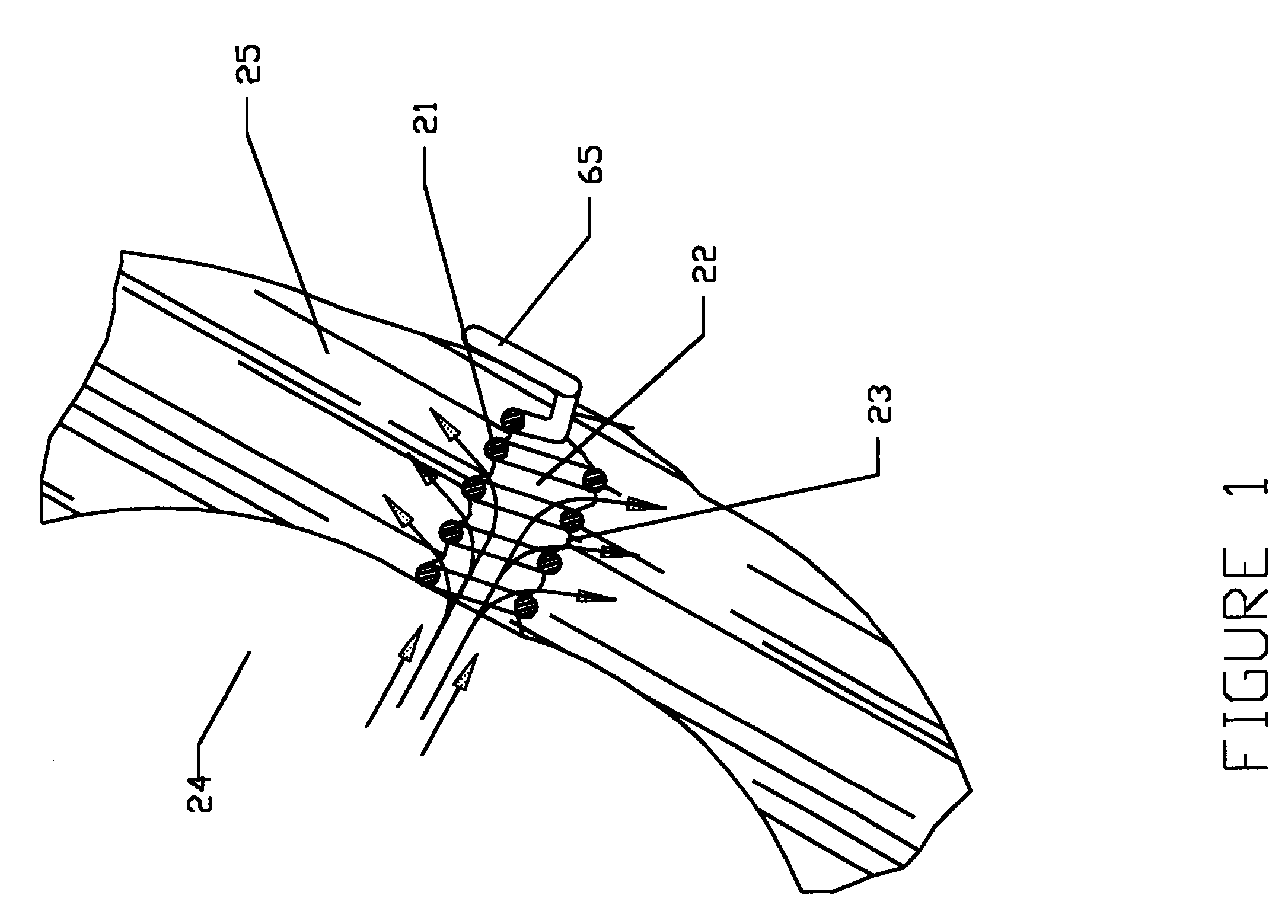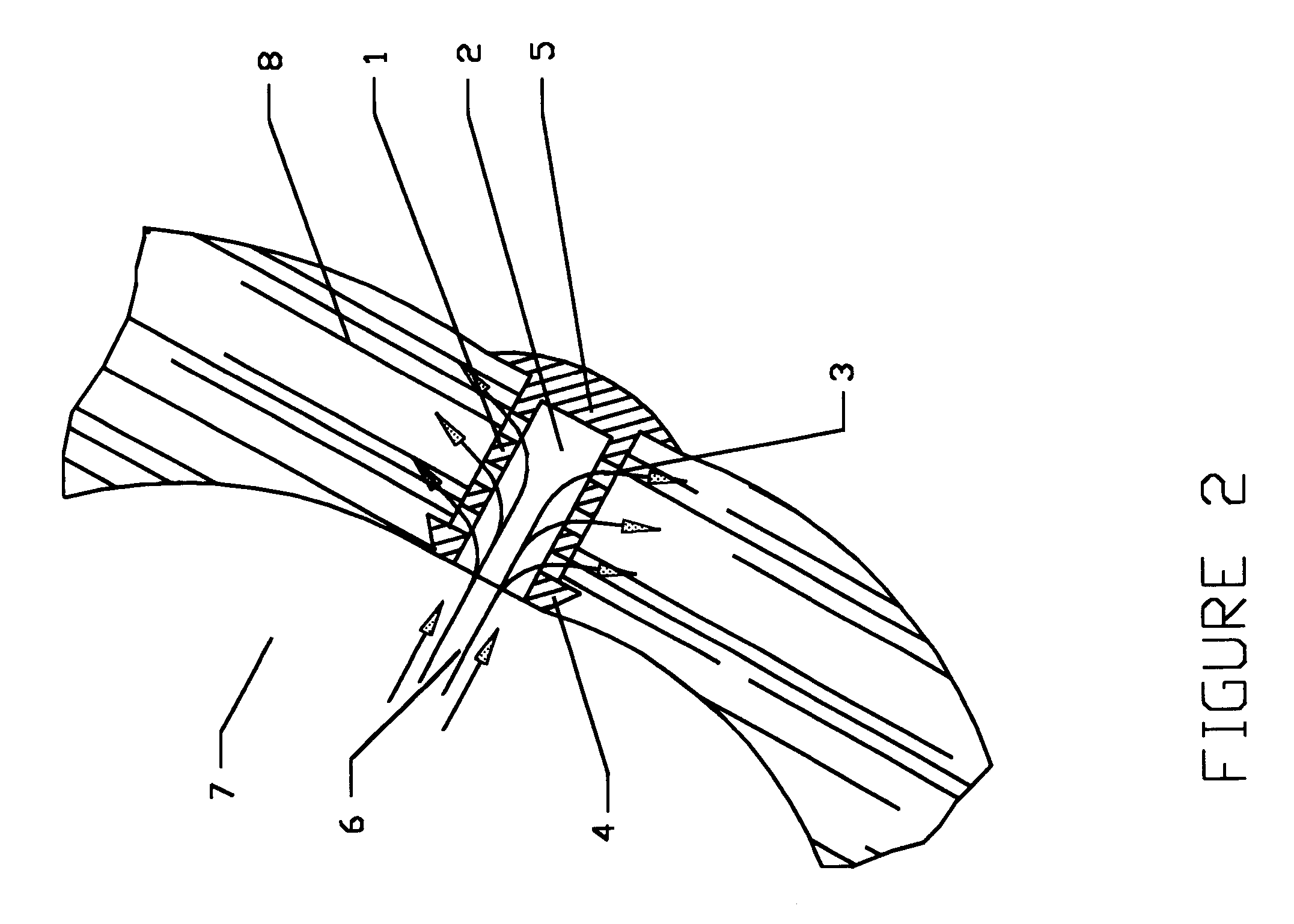Implant device for trans myocardial revascularization
a technology of implant device and myocardial revascularization, which is applied in the field of implant device for trans myocardial revascularization, can solve the problem of early closure of needle-made channels, and achieve the effect of reducing the risk of revascularization
- Summary
- Abstract
- Description
- Claims
- Application Information
AI Technical Summary
Benefits of technology
Problems solved by technology
Method used
Image
Examples
first embodiment
FIG. 7 shows the construction and method of use of one embodiment of a delivery device for creating a pathway in the heart wall and for placement of a myocardial implant in this pathway. In this first embodiment, a needle obturator 36 carries a myocardial implant 35 having an anchoring wire 37, which may be offset from the myocardial implant, as shown in FIG. 7, or aligned with the myocardial implant, as shown in FIGS. 11 and 12. The obturator and myocardial implant are inserted through the heart wall 38 until the endocardiac surface is reached. After the endocardiac surface 39 of the heart wall is reached, the obturator 36 is removed, as by turning or unscrewing the same, thereby leaving the myocardial implant 35 embedded in the heart wall. Additional improvements include a fluid channel 66 that is formed in the obturator body to provide an indication that the obturator's distal end 67 has crossed the endocardiac surface 39.
second embodiment
FIGS. 8A through 8I show the construction of an alternate myocardial implant and a delivery system for placement of the alternate implant in a heart wall. FIG. 8A shows a delivery system having a pin 40 and handle 41 having a locking device 42. An obturator 43 is mounted in the pin 40. The obturator 43 has a recess 44 (FIG. 8B) to engage the distal end of a myocardial implant 45. The pin 40 has a recess 46 (FIG. 8B) to engage the proximal end of the implant 45.
The method of use involves the placement of the implant 45 over an obturator 43. The pin 40 is then rotated to create a radial stress on the TMR implant 45 (FIG. 8D). The pin 40 is locked to the handle 41 (FIG. 8C). Advancement through the heart wall 50 of the obturator and TMR device 45 is achieved by pressing the obturator through the heart wall (FIGS. 8E, 8F). The pin 40 is released from handle 41 by withdrawing the locking device 42 (FIGS. 8G, 8H). This causes the implant 45 to be released from the obturator 43. The obtura...
PUM
 Login to View More
Login to View More Abstract
Description
Claims
Application Information
 Login to View More
Login to View More - R&D
- Intellectual Property
- Life Sciences
- Materials
- Tech Scout
- Unparalleled Data Quality
- Higher Quality Content
- 60% Fewer Hallucinations
Browse by: Latest US Patents, China's latest patents, Technical Efficacy Thesaurus, Application Domain, Technology Topic, Popular Technical Reports.
© 2025 PatSnap. All rights reserved.Legal|Privacy policy|Modern Slavery Act Transparency Statement|Sitemap|About US| Contact US: help@patsnap.com



